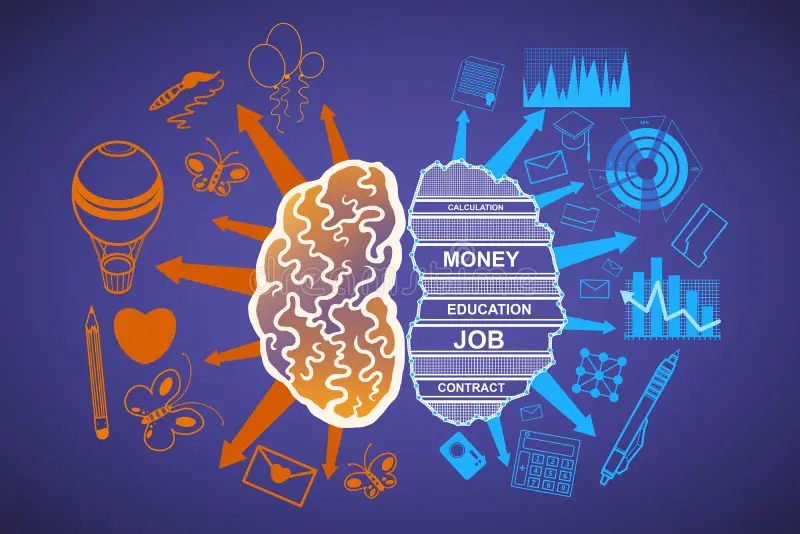How to Prepare for a Career Change After 30


Changing careers after 30 can feel like a massive leap into the unknown. Whether it’s the desire for more meaningful work, better work-life balance, or simply wanting to escape the monotony of a 9-to-5 grind, the idea of starting over might seem overwhelming. But here’s the reality: it’s never too late to take a career path that is aligned with your goals and passions. Actually, with your gained experience, emotional intelligence, and more defined life priorities, you may be better placed than ever to transition into a new career successfully.
Let’s look at how to realistically and emotionally prepare for a career transition after 30, and how to make your next chapter not only a new career—but a satisfying one.
1. Recognize the Desire for Change
Rather than jumping head-first into job boards or resume overhauls, begin by recognizing what you’re feeling. Do you feel bored? Burnt out? Underpaid? Or do you just feel like you’re destined for something more?
It’s crucial to hear these feelings out without criticism. We all change with age. The career you selected at your early 20s may not be fitting for who you’ve become today at 30 or older. This awareness of self is the initial and most effective step toward transformation.
Tip: Write your thoughts down or discuss them with a trusted friend or mentor. Sometimes, it helps to bring your thoughts into the open.
2. Identify What You Want (and Don't Want)
The next step is clarifying. Transitions are not only about leaving your current position; they are about going to something better.
Ask yourself:
- What type of work excites me?
- What values do I want my future career to convey?
- What kind of lifestyle am I looking for?
- What work do I never want to have to do again?
Making a “career wish list” can inform your choices. If you’re seeking flexibility, for example, working from home could be your priority. If you desire to make a difference, maybe the education or non-profit world is where you belong.
This exercise gets you to pivot with intention—not by default.
3. Take a Skills Inventory
Likely, you’ve developed a useful set of skills over time—even if they don’t necessarily appear to relate to your ideal new career. Most skills can be transferred from one industry to another, including:
- Communication
- Leadership
- Project management
- Problem-solving
- Data analysis
- Customer service
- Creativity
Honesty is the best policy when assessing your skills, and think about where they might be transferable in another industry or position. For instance, a teacher entering HR could point to their communication, conflict resolution, and training experience.
Don’t know what your transferable skills are? Try using something like SkillScan or even LinkedIn Skills Assessments.
4. Investigate Your Target Industry
Do some research before making any major decisions. Find out as much as you can about the industry you’re looking to get into. Ask yourself:
- What jobs are there?
- What qualifications or certifications do you need?
- What is the average pay?
- Is the industry expanding or contracting?
- What is the typical career path?
Online sources such as LinkedIn, Glassdoor, industry forums, and Reddit communities can provide real-world information. Even better, arrange informational interviews with individuals already employed in your target field.
Exposure to the real world can assist you in testing your career change concept before committing to it.
5. Fill the Gaps
When you have a sense of direction and what it will take to get there, you can bridge the gap between where you are now and where you want to be.
You might need to:
- Enrol in a certification program
- Pursue further education (look into part-time or online programs)
- Create a side business
- Volunteer or freelance to gain experience
- Intern or shadow someone in the field
The silver lining? It’s easier than ever to get an education. Options such as Coursera, Udemy, edX, and Google Career Certificates provide flexible, cheap training in in-demand areas.
Even dedicating just a few hours a week to learning can impact greatly over several months.
6. Freshen Up Your Personal Brand
When you’re changing careers, your resume, LinkedIn profile, and even your elevator pitch must be revamped. It’s not a matter of listing old job responsibilities—it’s a matter of sharing a concise narrative of who you are and where you’re headed.
Resume Strategies:
- Make your resume reflect transferable skills.
- Use a summary section to describe your career change.
- Use numbers to quantify achievements and demonstrate impact.
LinkedIn Strategies:
- Replace your headline to indicate your new objectives (e.g., “Aspiring UX Designer | Former Educator with a Passion for User Experience”).
- Post relevant material and projects to make yourself sound credible in your new profession.
Consider your personal brand like the connector between your old and new profession.
7. Establish a Network in Your New Profession
Networking is not merely about getting job leads—it’s about developing relationships, learning, and finding confidence.
Here’s where to begin:
- Attend industry meetups, webinars, or conferences (virtual ones count too!)
- Join LinkedIn groups or online communities related to your new field
- Reach out to people for informational interviews
- Share your learning journey online
You’ll be surprised how supportive people can be when you’re authentic about your goals.
Your network could be your biggest asset during a career change.
8. Prepare Financially
One of the greatest fears about switching careers after 30 is financial. You may take a temporary reduction in pay, or even have to live without a paycheck for a brief period while you get settled.
Here’s how to prepare:
- Create an emergency fund (3-6 months’ worth of expenses)
- Eliminate unnecessary expenses
- Seek out scholarship or grant options if you’re returning to school
- Investigate part-time work or freelance opportunities to tide you over during the transition
Financial readiness provides you with the ability to take smart risks.
9. Adopt the Beginner Mindset
Beginning anew can be humiliating, particularly when you’ve already established some level of status or compensation base in your past profession. But having a “beginner’s mindset” is essential.
Be receptive to:
- Learning from younger professionals
- Beginning at an entry or mid-level position
- Getting constructive criticism
- Making mistakes
Remember: you don’t have to start from scratch just because you’re changing careers. You’re bringing a wealth of life and work experience that can serve as an advantage.
Humility and curiosity are the best ways to succeed in any career.
10. Be Patient and Resilient
A career shift after 30 is seldom linear. There could be rejections, setbacks, or periods of self-doubt. That’s all normal.
Celebrate small victories:
- Finishing a course
- Getting an interview
- Growing your network
- Getting positive feedback
Most importantly, be kind to yourself. You’re doing something brave and transformative, and that deserves recognition.
Success isn’t always instant—but it’s always worth it.
Switching careers after 30 might seem scary, but it’s also one of the most empowering things you can do. You’re not trapped—you’re growing. And with the right combination of reflection, planning, learning, and networking, your next career chapter could be the most fulfilling one yet.
So go ahead—brush off your aspirations, take the leap, and reformat what success means to you.
For further assistance contact Aara Consultancy!
We provide 360° Solution for your Education Needs. Contact us






